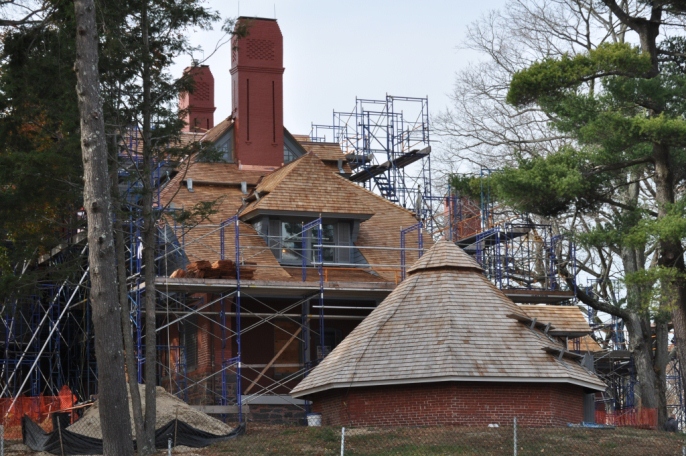|

NPS
Contact: Martin Christiansen, (516) 802-7539 Oyster Bay, N.Y. – After three and a half years and almost $10 million in repairs and refurbishment, the work on the Theodore Roosevelt House at Sagamore Hill is complete. The house will reopen for regular public tours on July 13, 2015.
When Theodore Roosevelt was 15 his father established the family's summer residence in Oyster Bay.Ten years later, in 1880, Roosevelt and his fiancée Alice Hathaway Lee bought the hill on Cove Neck where the house now stands.Roosevelt hired the New York architectural firm of Lamb and Rich to draw up house plans. Unfortunately, Alice died in 1884 after giving birth to their daughter Alice.But Roosevelt went forward with his plans to build the house, and changed its name from Leeholm to Sagamore Hill after he married his second wife Edith Carow, with whom he had five more children.Sagamore Hill was the family's treasured haven from the world, and on his deathbed there Roosevelt said to his wife, "I wonder if you will ever know how I love Sagamore Hill." The Queen Anne style house is a three-story, wood-framed building of approximately 14,175 square feet with painted brick masonry, wood shingle siding, a wood shingle roof, and massive brick chimneys. The interior is painted or wallpapered plaster, or wood paneling, with wood flooring. Throughout the house, there are 12,000 objects, which include many furnishings, works of art, books, and a significant number of big game trophies. The National Park Service hired the John G. Waite Architectural Firm to plan the rehabilitation of the Theodore Roosevelt Home.They began the project with a report documenting the condition of the structure and providing recommendations for the long-term preservation of the Theodore Roosevelt Home and its collections. When the family lived there Mrs. Roosevelt referred to the house as "a bird cage," and the study concluded that the house was suffering from persistent moisture-related problems, in part a result of poor air flow control. After reviewing these reports, the engineers decided that the best way to improve the structure's long-term condition was to restore the original 1884 design of the house. Before any work could be performed, the 12,000 artifacts that populate the house had to be removed. Every room and each item in them was photographed in place. As every item was packed, the entire collection was re-catalogued. Every item's condition was assessed and any restoration work required was noted. Over the ensuing three years, specialists were hired to ensure that collection artifacts got the attention they needed, from furniture and art to metal and taxidermy. However, not every object in the house could be moved. Those items, like enormous elk and bison heads, and elephant tusks, had special cases built to protect them during the course of project. Two of the most exciting elements of the project include the rebuilding of a light and air shaft that had been dismantled in the 1950s, and the removal of a room addition on a porch at the rear of the house.The original house design showed an air shaft in the center of the structure from the second floor ceiling through the third floor and attic to skylights in the roof, the removal of which was a major factor in the structure's poor air circulation. The reinstalled air shaft allows improved air circulation and increased natural light in the center of the house. In addition, each of the 92 windows was restored and treated with UV filters. Energy efficient and improved lighting was installed throughout the house as well. In 1918, after electricity was installed in the house, Mrs. Roosevelt wrote a letter to her sister saying "it's been a month and the house hasn't burned down yet." While the electrical systems had been tweaked over the past century, they had not been completely overhauled until this project. With the updated utilities, any concerns about their safety have been laid to rest. While the project provided much needed attention to the Theodore Roosevelt House and its collection, it has improved the rest of the site as well. There is a new accessible path and ramp to the porch of the house, improved roads and paths throughout the grounds, improved dark-sky friendly lighting, and upgraded security and monitoring systems in all of the facilities and the grounds. The mission of the National Park Service is to preserve unimpaired natural and cultural resources like Sagamore Hill for the enjoyment, education and inspiration of this and future generations. This project will help preserve the legacy of Theodore Roosevelt, who was instrumental to modern conservation and in establishing our federal public lands. The completion of this project to revitalize Roosevelt's home at Sagamore Hill National Historic Site is an apt milestone as the National Park Service begins its second century of stewardship. |
Last updated: July 8, 2015
